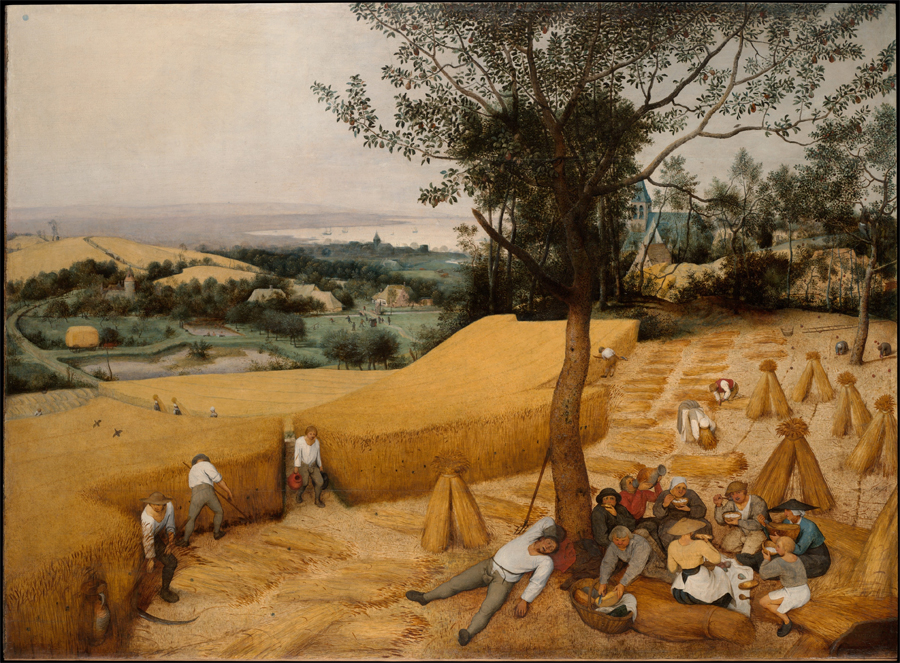
Some time ago we’ve shown you 10 most expensive paintings in the world and this time we would like to show you some more. You are interested in modern art, abstract expressionism, or renaissance paintings. Or you are studying the role of Monet in the Impressionist Movement. The Metropolitan Museum of Art beckons you. Only a few can buy original artworks painted by masters.
If you are interested in viewing the masterpieces by the most famous artists from around the globe, go to the Met Museum. For most, museums like ‘the Met’ are temples of art.
Here are the 20 most famous artworks displayed as a part of the Met Collection in New York.
1. Vincent Van Gogh, “Self Portrait with Straw Hat,” 1887
During his stay in Paris between 1886 and 1888, he painted twenty-two self-portraits. This one is his most famous self-portrait. It shows his mastery over the Neo-Impressionist technique. It is one of his most famous paintings painted on the reverse side of an older peasant study.
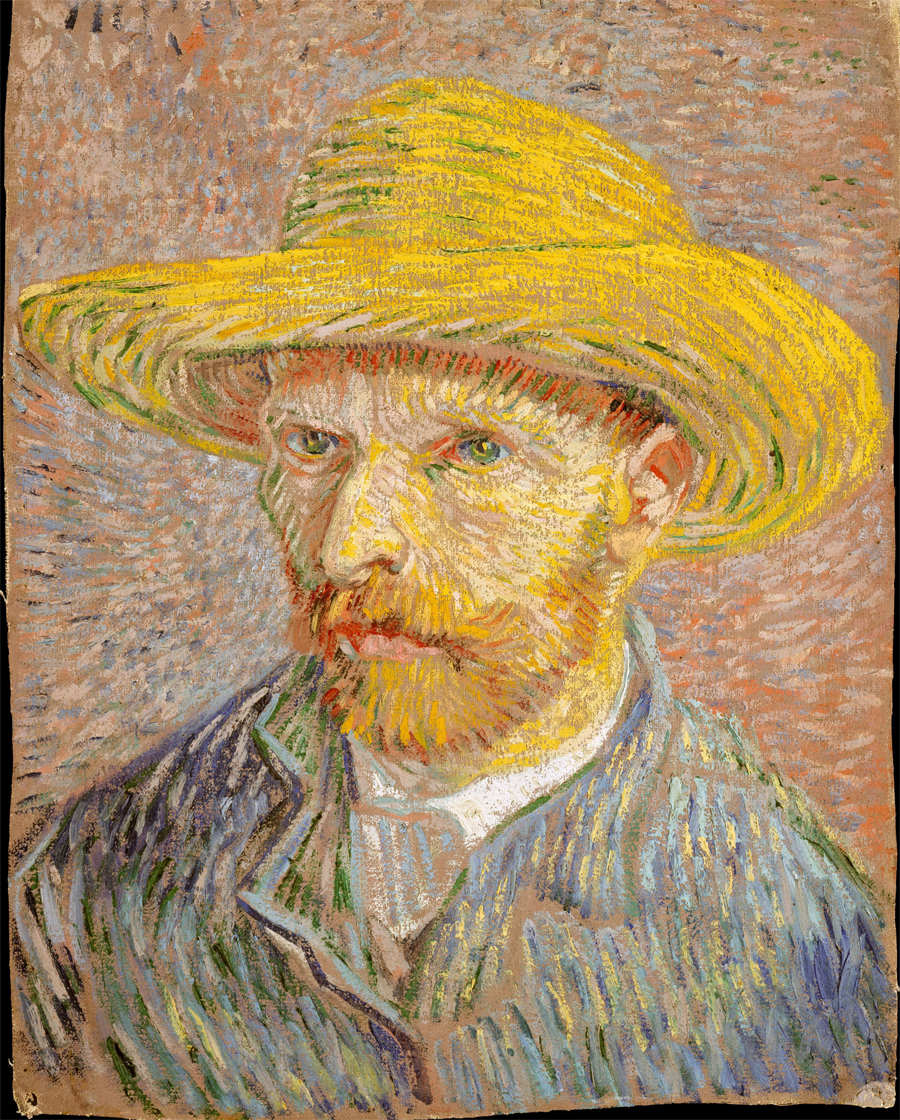
Self Portrait with a Straw Hat represents Van Gogh’s deteriorating health. The deep shadows, the three-quarter profile, and a tight mouth show emotional and physical stress. Explore the most famous artworks including the self-portrait of Vincent Van Gogh at the Metropolitan Museum of Art.
2. Emanuel Leutze, “Washington Crossing the Delaware,” 1851
Leutze began working on the first version of Washington Crossing the Delaware in 1849. However, it was destroyed in the fire that engulfed his studio. Although Bremen Kunsthalle restored and acquired it, it was again destroyed in the 1942 bombings.
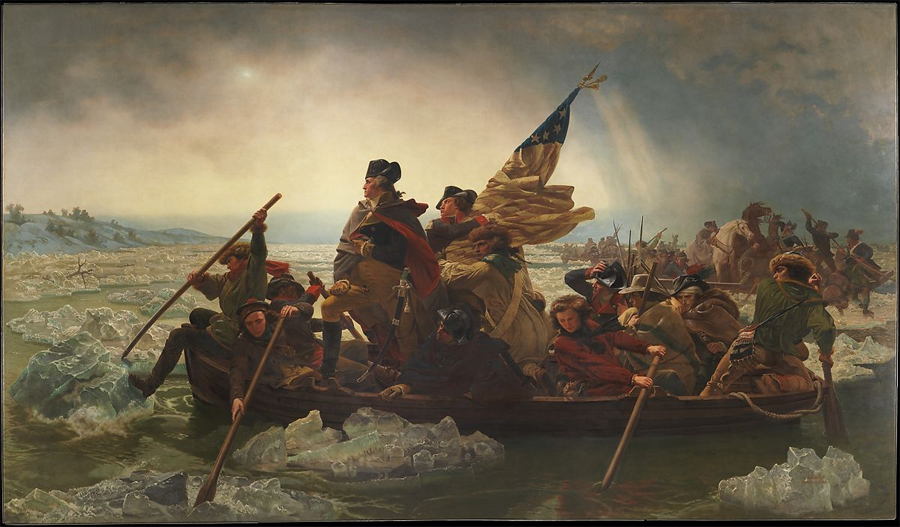
In 1850, Leutze began working on the version that is now a part of the Met Collection in New York City. The other version was in the West Wing of the White House in Washington D.C. However, as of March 2015, the other Washington Crossing the Delaware is on display at the Minnesota Marine Art Museum in Winona, Minnesota.
3. Claude Monet, “Bridge Over a Pond of Water Lilies,” 1840-1842
The Bridge over a Pond of Water Lilies was painted by French impressionist Claude Monet in 1899. Monet used oil on canvas to create this masterpiece on a horticultural theme. Monet was interested in horticulture and he likely landscaped the land depicted here in the painting.
The serene piece depicts an arched wooden bridge across a pond of lilies. The water surface is almost glassy with no disturbance and the pond is surrounded by lush greenery interrupted by bright flowers. Visit it at The Met Fifth Avenue in Art gallery 819.
4. Duccio di Buoninsegna, “Madonna and Child,” ca. 1290–1300
Duccio di Buoninsenga’s Madonna and Child is one reason every art connoisseur visits the Met Collection at least once. This intricate yet simple representation of the Virgin Mary and Jesus is from the late 13 th or early 14 th century.
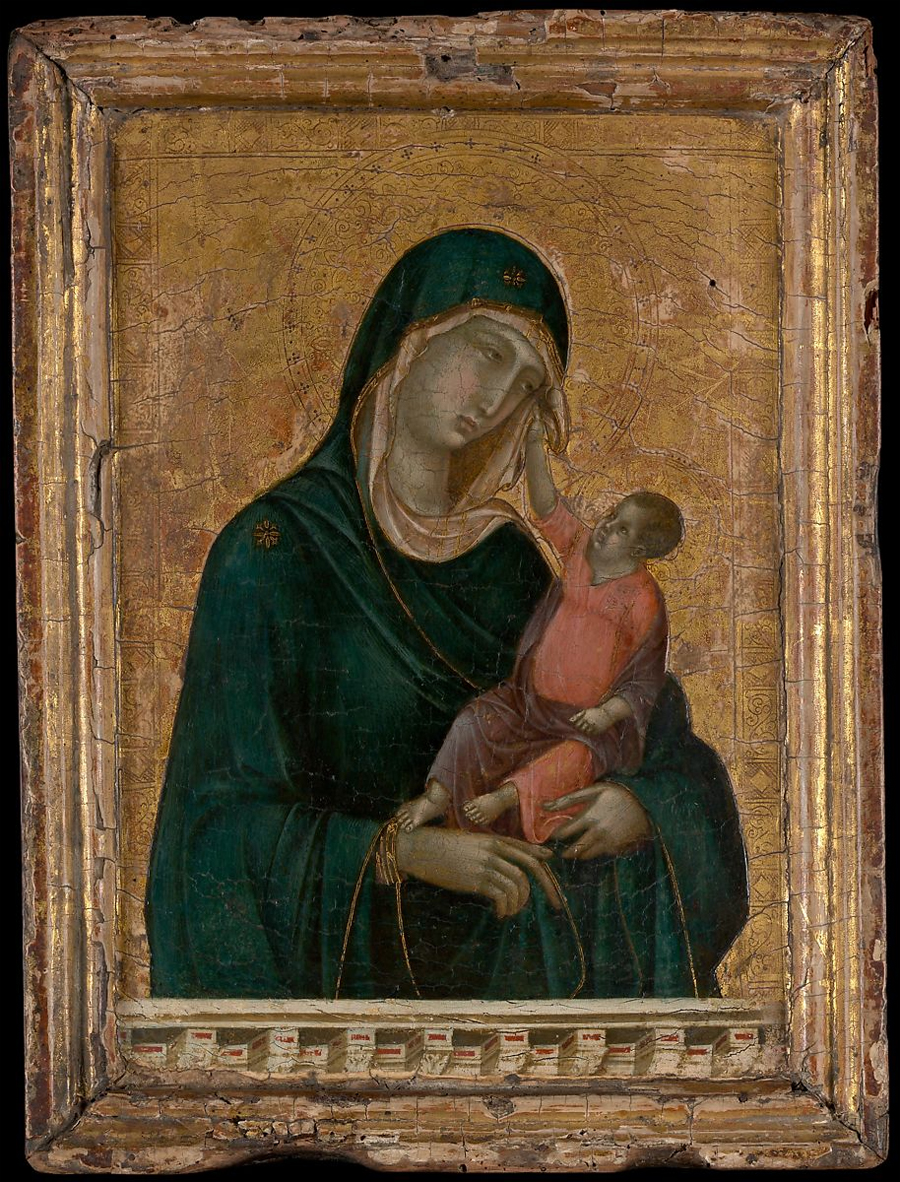
It was the beginning of a new era of paintings, where the painters moved away from the traditional Byzantine and Italo-Byzantine styles. You can see how Buoninsegna began with a subject that’s magnificent and powerful but painted a portrait that evokes human emotions associated with motherhood.
5. Edgar Degas, “The Dance Class,” 1874
The Dance Class by Edgar Degas is one of the finest examples of the Impressionist Art movement that began in Paris. Although Degas has never been popular as an Impressionist, the brushwork and colors indicate Degas’ fascination with Impressionism.
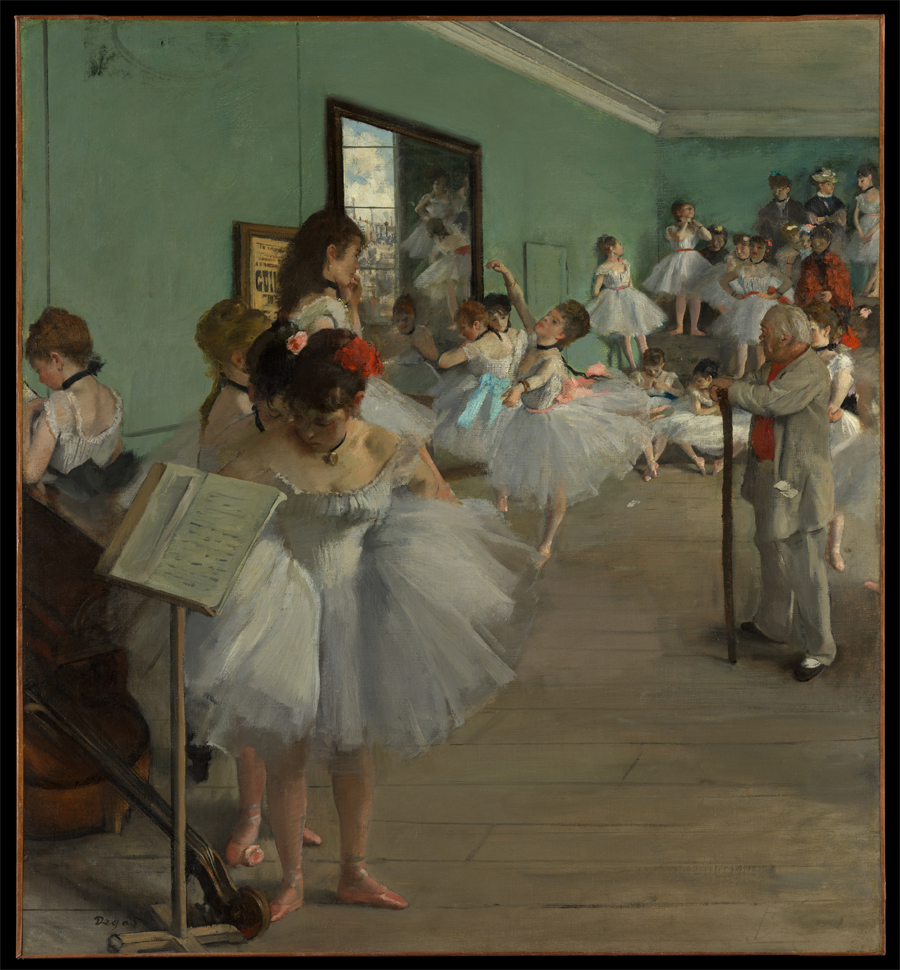
The imaginary scene is set inside the old Paris Opera, which had burned down recently. Upon closer inspection, you can see the poster for Rossini’s Guillaume Tell. It may be a nod to the singer Jean-Baptiste Faure, who commissioned the painting and lent it to the Impressionist exhibition in 1876 at Paul Durand-Ruel’s art gallery.
6. Rembrandt, “Aristotle with a Bust of Homer,” 1653
Painted by Rembrandt in 1653, this imaginary portrait depicts Aristotle resting his hand on the bust of Homer. He is lost in reflection and a gold medallion of Alexander the Great hands from a gold chain. Experts interpret this painting as Aristotle (and Rembrandt) contemplating the value of material possessions and worldly success.
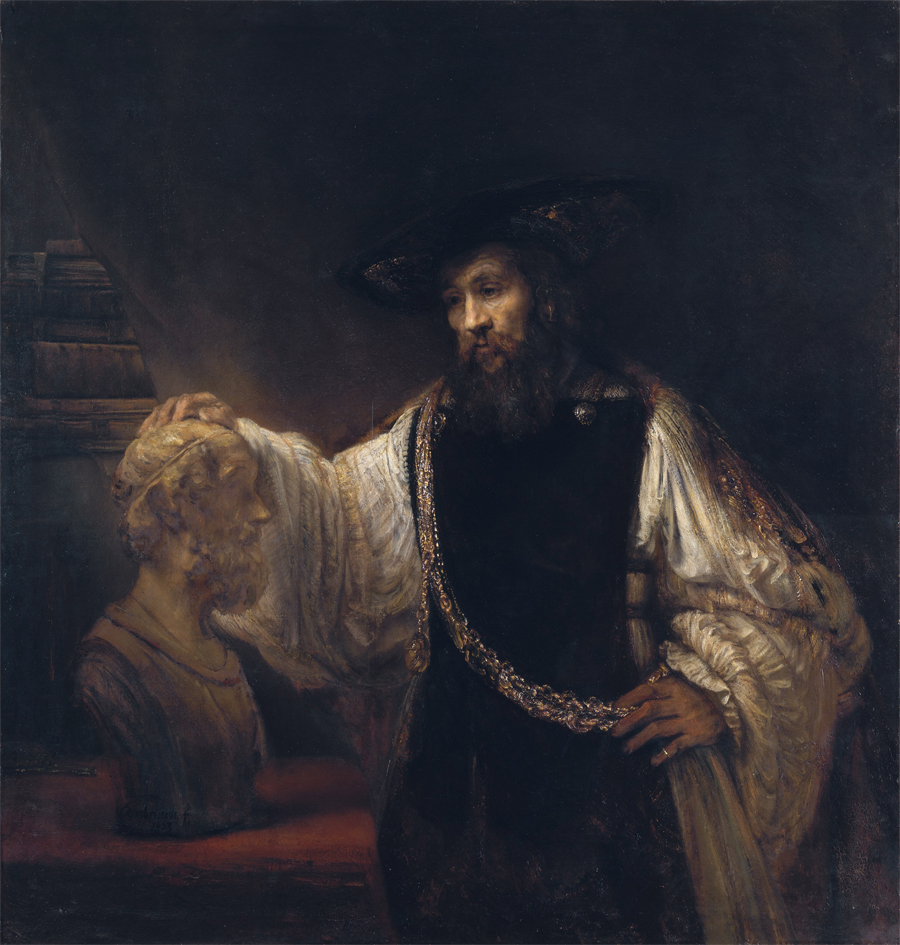
Rembrandt painted this picture for Antonio Ruffo, the great Sicilian Collector. You can now find it as a part of the most famous artworks of all time in the Met Collection.
7. Jackson Pollock, “Autumn Rhythm (Number 30),” 1950
Jackson Pollock ushered in a new era of nonrepresentational pictures with his “drip” painting techniques. The Autumn Rhythm (1950) is as unique as Pollock’s personality. He applied thinned paint to an unprimed and unstretched canvas. He used knives, sticks, and towels to “play” with the colors that he poured, dripped, flicked, splattered, and dribbled on the canvas.
The Autumn Rhythm not only suggests that Pollock painted it in the autumn of 1950, but also conveys the constant flux of nature captured in this piece.
8. Raphael, “Madonna and Child Enthroned with Saints,” 1504
Madonna and Child Enthroned with Saints, aka, the Colonna Altarpiece is the only altarpiece by Italian High Renaissance artist Raphael. He painted it for the Franciscan Convent of Sant’ Antonio, Perugia.
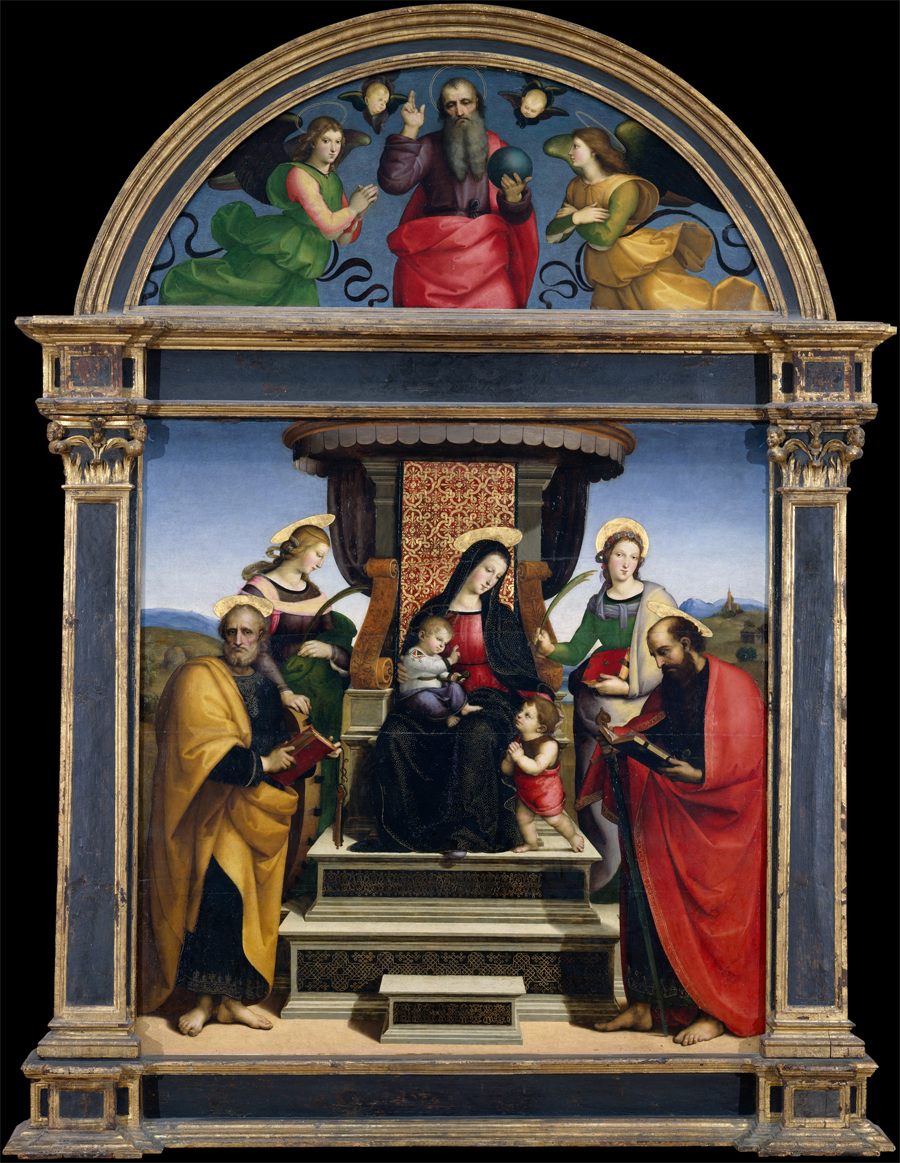
It belonged to a part of the church reserved for the nuns. In the early 20 th century, J. Pierpont Morgan bought the original artwork creating a massive uproar. Morgan gifted it to The Met and it now hangs among the most famous paintings at the Met Museum in New York City.
9. Francisco Goya, “Bullfight in a Divided Ring,” 1814
You can find the theme of bullfighting in many of Goya’s works. However, Bullfight in a Divided Ring is a masterpiece riddled with controversy.
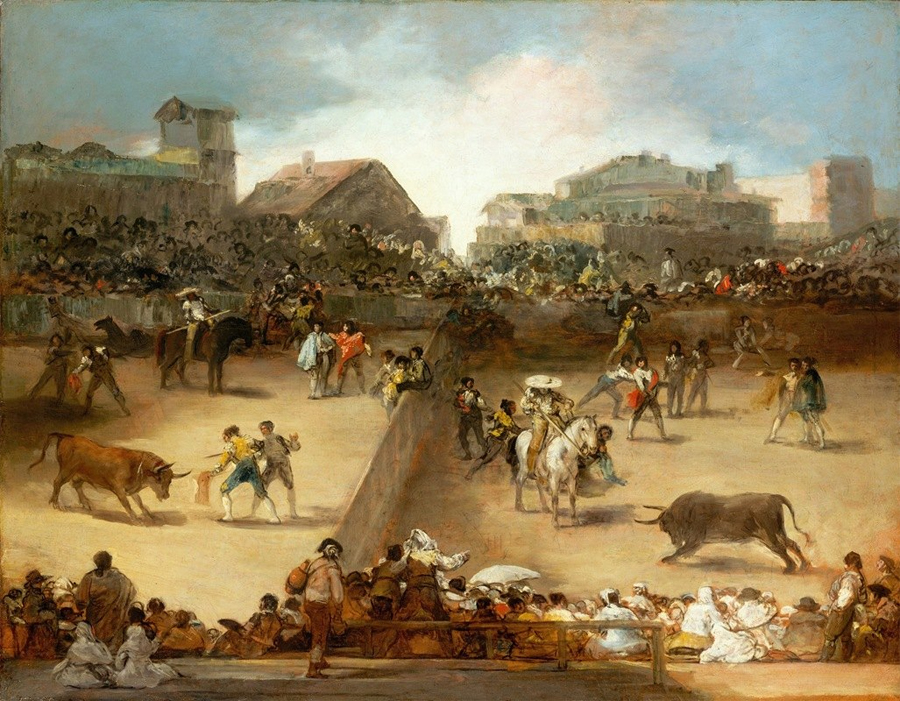
It is a part of the Tauromaquia series published in 1816. During the mid-19 th century, several Goya paintings were copied. Several experts have commented on the recurrence of several motifs that make it look like a brilliant copy. However, the Metropolitan Museum of Art considers this to be an original due to the brilliant details seen in this painting.
10. Mark Rothko, “No. 13 (White, Red on Yellow),” 1958
Mark Rothko’s No. 13 embodies simple forms imbued with harmony and co-existence. White, Red on Yellow is a pioneering piece of artwork. It defies traditionalism and embraces the concept of abstract expressionism.
The imposing bands of color seem to hover on the surface due to the “halo” created around the horizontal bands. It is further enhanced by the diluted nature of the paint. It renders a delicate translucence not visible in the works of his contemporaries in the art gallery.
11. Jacques Louis David, “The Death of Socrates,” 1787
The Death of Socrates is one of the most famous artworks of Jacques Louis David. This Neoclassical painting represents Socrates’ resistance toward unjust authority in a frieze-like composition.
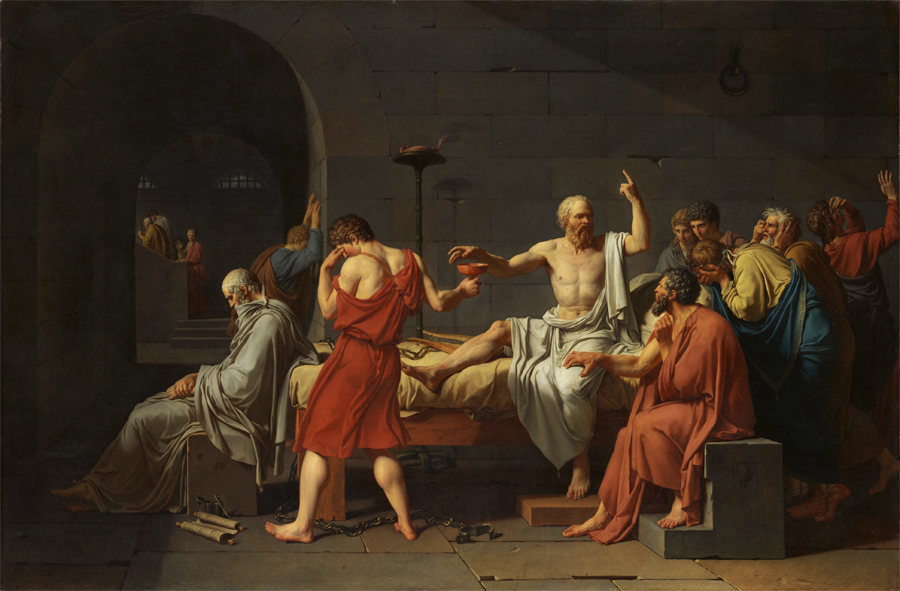
Through impeccable detail, Jacques captures the last moments of Socrates and his disciples as the former grasps the chalice of hemlock to end his own life. You can visit the Metropolitan Museum of Art to view this artwork. It’s on display at the Met Fifth Avenue, Art gallery 614.
12. Johannes Vermeer, “Woman with a Water Jug,” 1660-1662
Vermeer’s Woman with a Water Jug or the Young Woman with a Water Pitcher is the first to enter any American art collection. In this piece you can see a woman standing beside the window with a water pitcher, ready to begin her day.
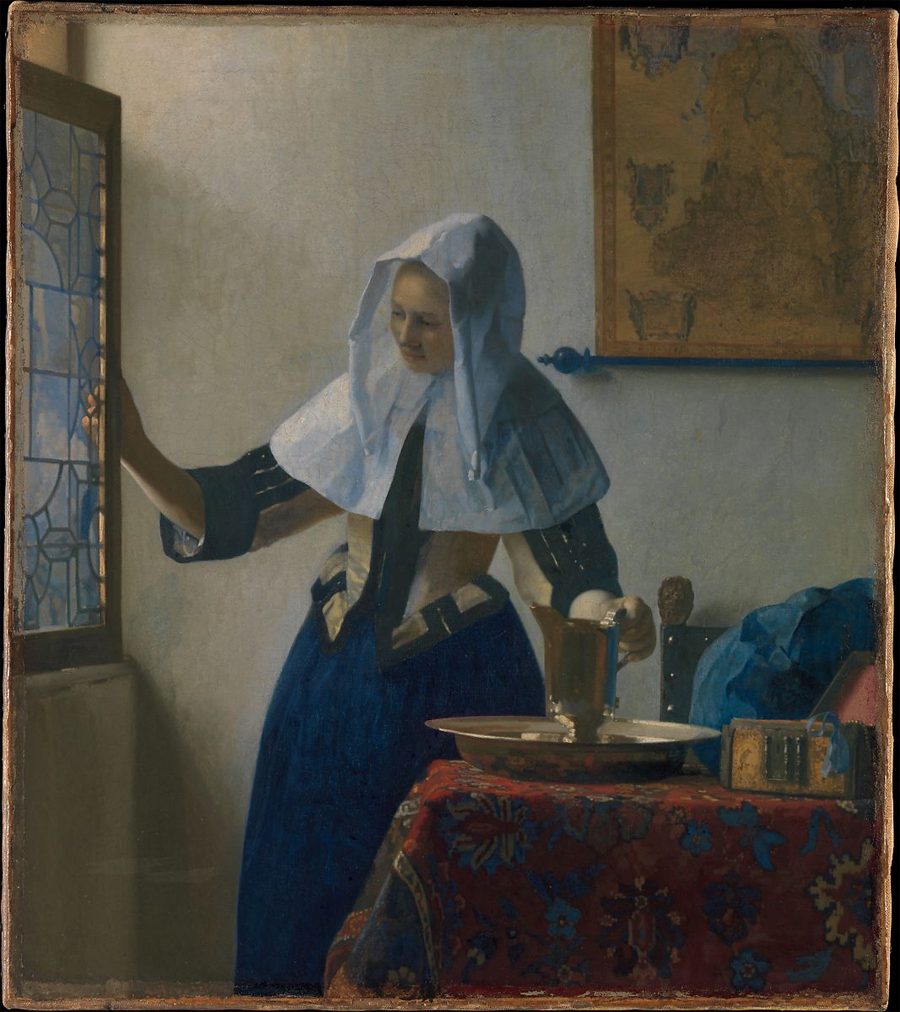
The finesse with which Johannes Vermeer captures this scene is mesmerizing. From the details on the cloth that covers the woman’s head and shoulders, to her tender expression; this painting is poetry in light and shadows.
13. Caravaggio, “The Musicians,” 1597
The Musicians or Concert of Youths by Caravaggio has been in the Met Collection New York since 1952. Experts believe that Caravaggio painted The Musicians exclusively for Cardinal Francesco Maria Del Monte.
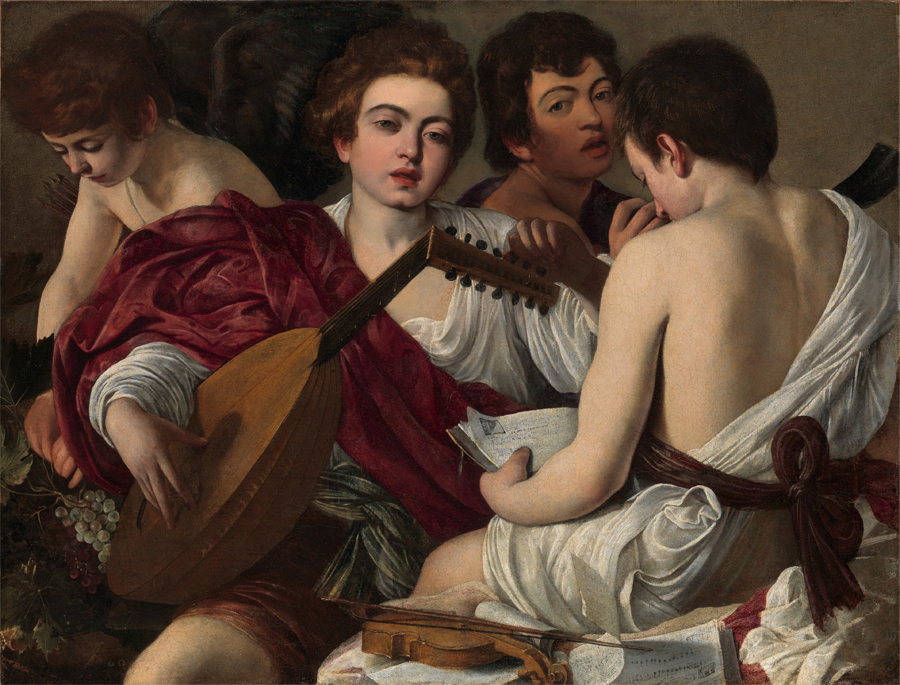
Interestingly, while Cupid is the center and source of music in the famous painting, you can catch a glimpse of Caravaggio himself as the second boy from the right. It is one of the most famous paintings that established Caravaggio’s distinct style in the 16 th century.
14. Pieter Bruegel the Elder, “The Harvesters,” 1565
The Harvesters will transport you to a hot summer in the rural Netherlands. A part of the series commissioned by Nicolaes Jonghelinck, an Antwerp merchant, this painting depicts rural workers on a field. Initially a part of a six-painting series depicting each season, The Harvesters is the only one in the US.

It is currently on display in the Metropolitan Museum of Art at The Met Fifth Avenue in Gallery 625.
15. Pablo Picasso, “Gertrude Stein,” 1906
Picasso painted the portrait between 1905 and 1906. It is one of the last paintings belonging to his “Rose Period”. You can clearly observe the effect of Cubism in this painting as Picasso reduces her body to simplistic proportions of masses.
Gertrude Stein was one of the most popular Americans to respond to avant-garde art. She is one of the key players behind Picasso’s monumental success.
16. Gustave Courbet, “Woman with a Parrot,” 1866
When Gustave’s Woman with a Parrot was first displayed in the Salon of 1886, it was met with harsh criticism due to the model’s ungainly pose and the artist’s lack of taste. Right now, it is a part of the Met Collection.
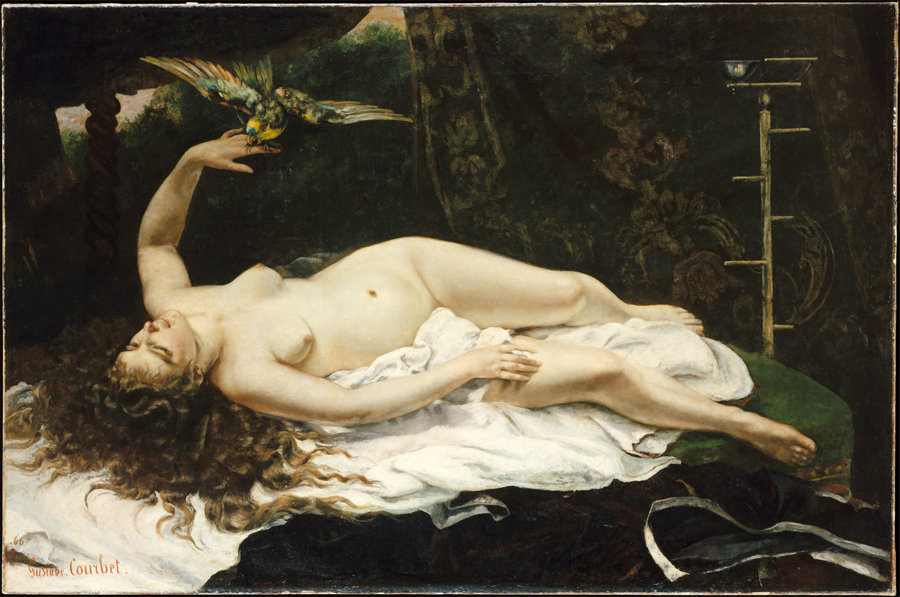
The painting started a revolution among the younger generation of painters who shared Gustave Courbet’s disregard for what was considered “conventional” and “tasteful.” This splendid painting is said to have inspired Manet.
17. Rembrandt, “Self-Portrait,” 1660
Rembrandt painted this Self-Portrait in 1660 when he was 54 years old. Although he was a dedicated self-portraitist, this stands out due to the finer lines on his countenance and wisps of white in his hair.
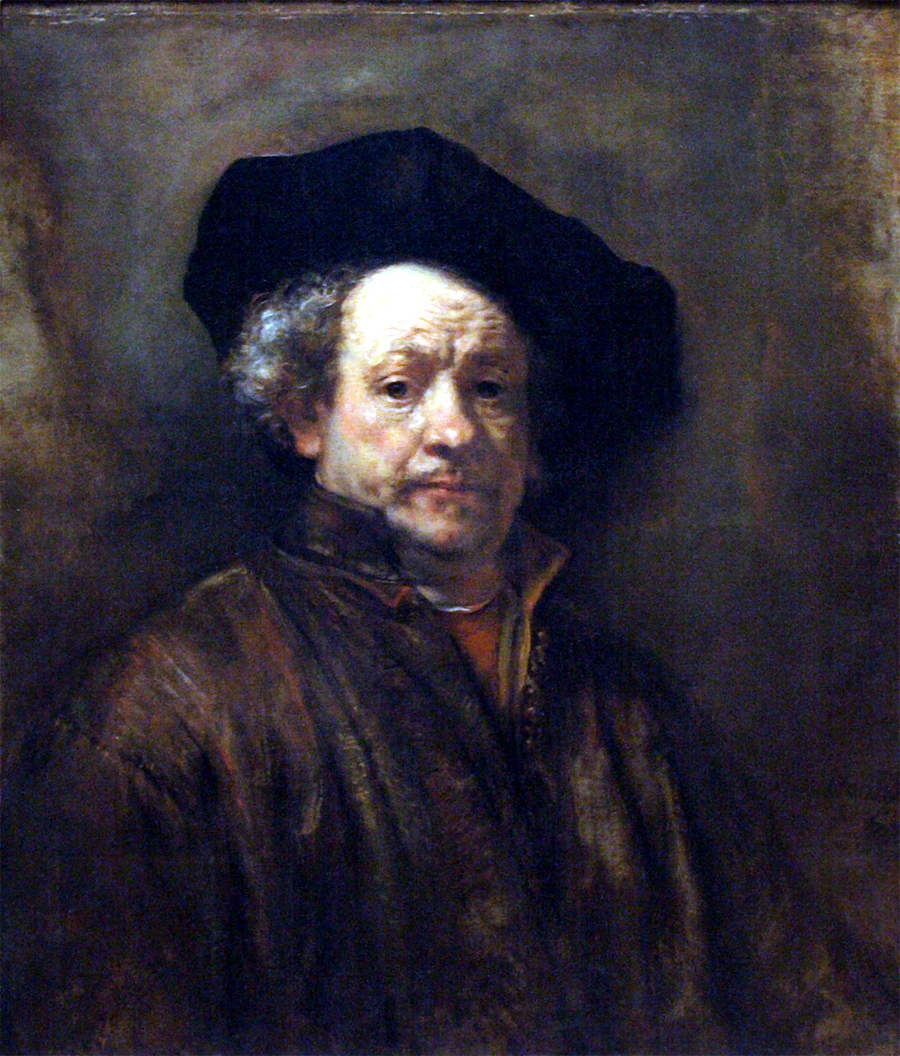
Rembrandt has done a marvelous job of capturing aging and the wisdom that comes with age in this self-portrait. The Self-Portrait, 1660 is now available for viewing at the Met Fifth Avenue Gallery 964.
18. Georges de La Tour, “The Fortune Teller,” probably 1630s
The sharp eyes and busy hands create their own narrative in an otherwise stationary painting by Georges de La Tour. The Fortune Teller depicts the age-old tale of a fortune-teller who keeps the unassuming young man busy, while her younger accomplices rob him.
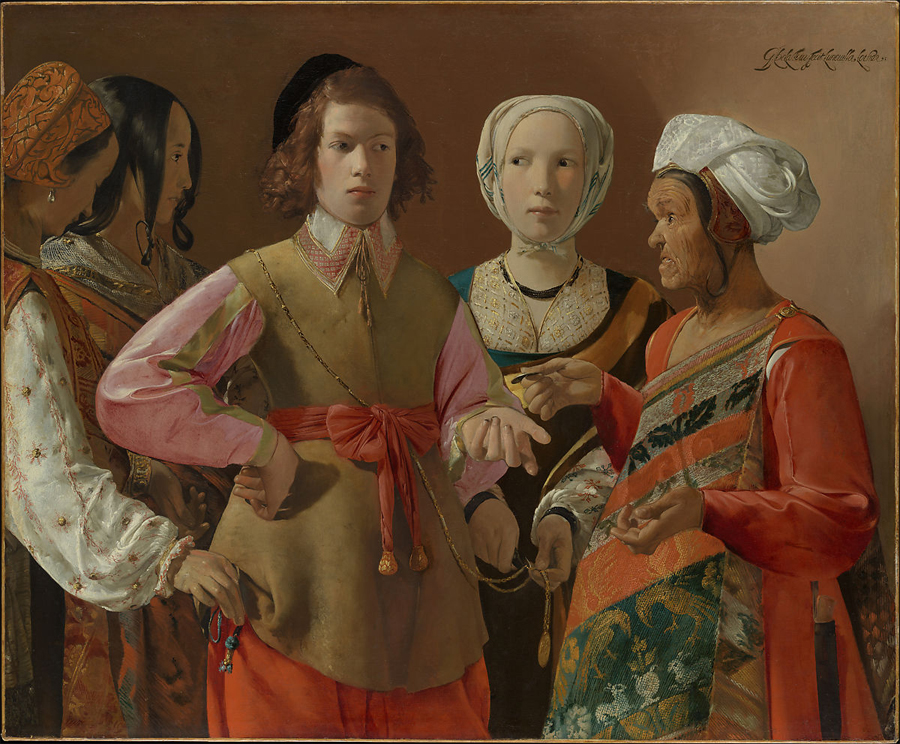
The painting was discovered in the mid-20 th century. The artist has inscribed the name of the town suggesting that he developed the style of painting independent of Caravaggio’s influence.
19. Titian, “Venus and the Lute Player,” 1565-70
The Venus and the Lute Player isn’t just a painting. It’s a sensuous experience that involves more than the simple retelling of mythological stories. In this painting, Venus stops to welcome a crown of flowers from Cupid as a well-dressed lute player stares at her mesmerized. In the background, nymphs and satyrs dance to music.
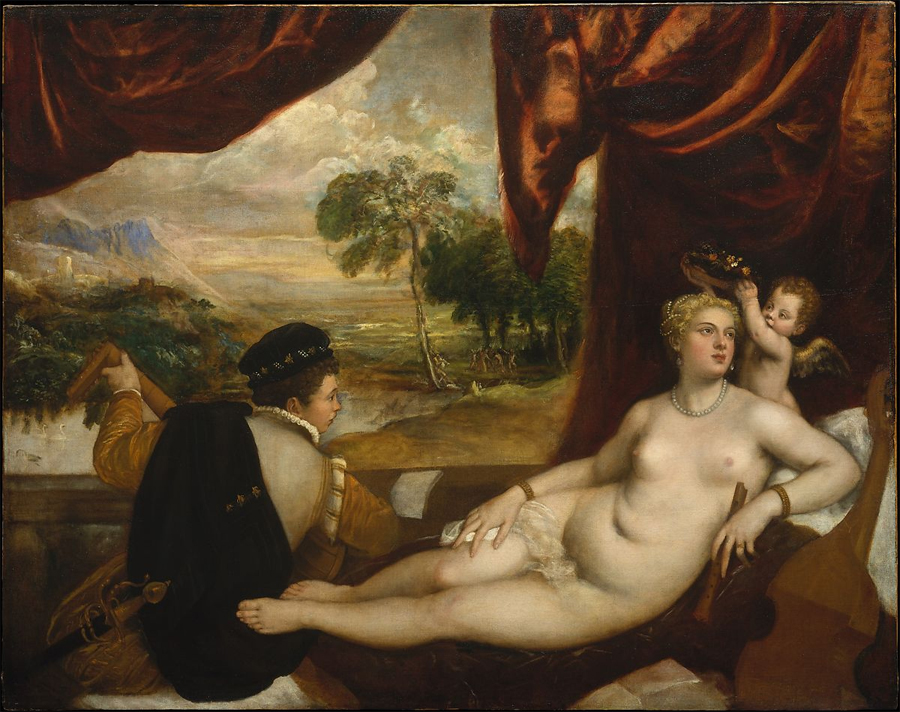
This painting was believed to allude to the controversy of seeing vs. hearing as ways to perceive beauty. It is a social narrative on the ways we perceive beauty.
20. Elisabeth Louise Vigée Le Brun, “Julie Le Brun Looking in a Mirror,” 1787
Vigée Le Brun paints her own child in this painting. The presence of a full profile and the use of a mirror to depict the reflection of her face makes this painting one of a kind. Vigée Le Brun manages to capture childhood in late-18 th century Europe through this painting.
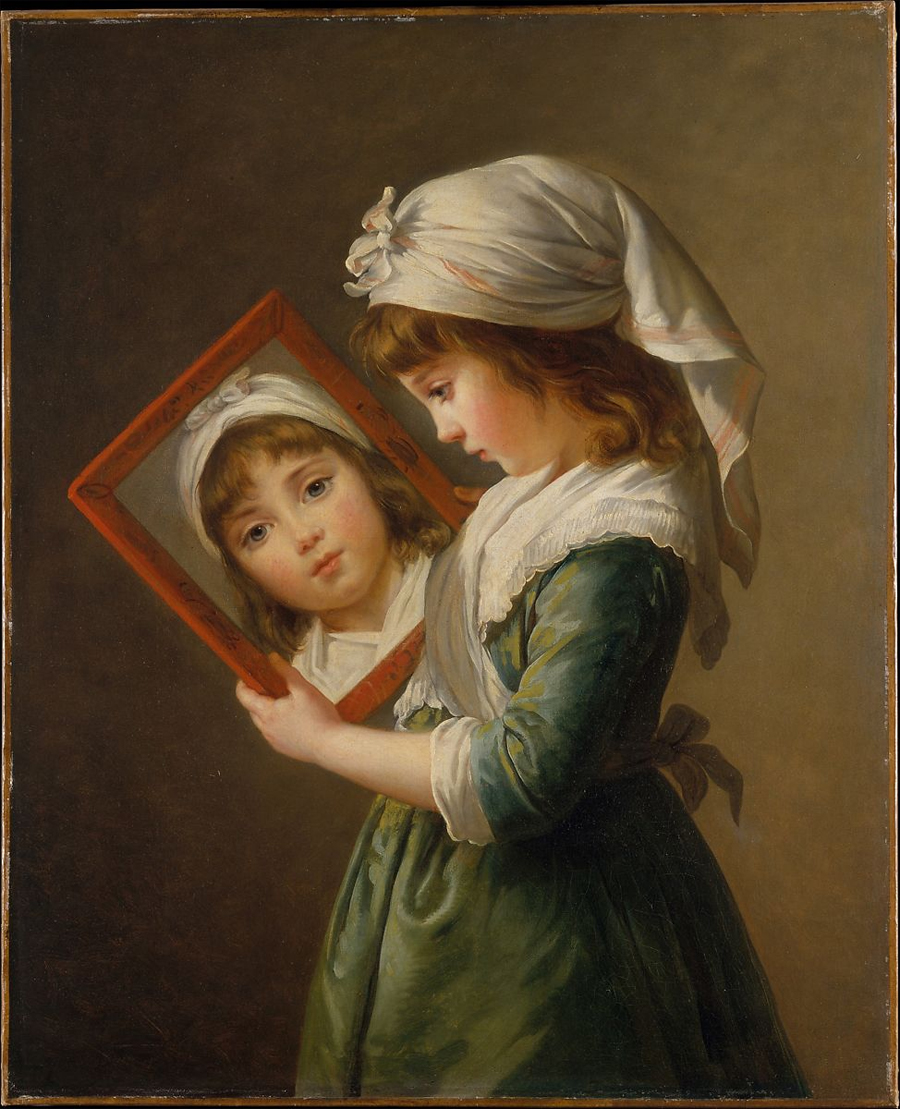
It is a part of a larger collection that she submitted to the Salon of 1787. Now Julie Le Brun Looking in a Mirror is a part of the Met Collection in New York.
Images source: www.metmuseum.org

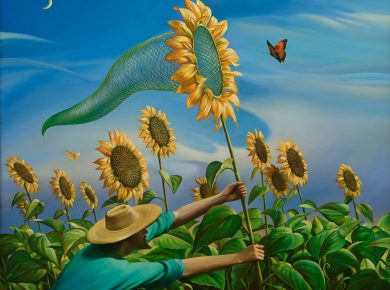
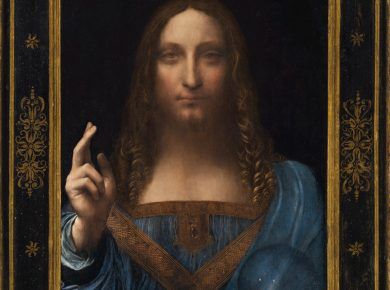
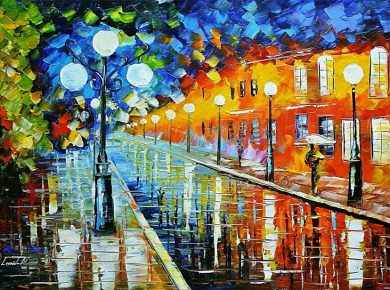

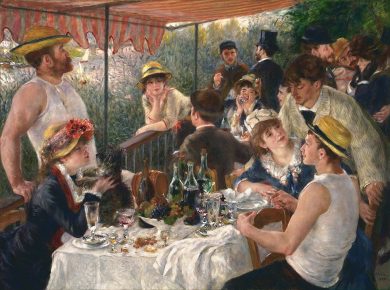
1 comment
Reality and fantasy are one in these moving and inspired works of the masters.